Балет и опера
Театральная сцена. Вид сверху
Спектакль в Большом театре (1856 г.)
Александр III России и его семья в Большом, 1883 г.
Большой театр репертуарный театр, что означает, что он основан на списке постановок, любое из которых может быть выполнено в определенный вечер. Обычно он представляет от двух до четырех новых балетных или оперных постановок каждый сезон и приостанавливает выпуск аналогичного количества. Декорации и костюмы для большинства спектаклей изготавливаются в мастерских Большого театра. Артисты набираются в основном из постоянных балетных и оперных трупп Большого театра, время от времени выступающих с гостями. После распада Советского Союза было предпринято несколько попыток уменьшить традиционную зависимость театра от крупных государственных субсидий. Корпоративное спонсорство распространяется на некоторые постановки, но государственное финансирование по-прежнему является источником жизненной силы компании.
Большой театр с самого начала ассоциировался с балетом. Чайковский балет Лебединое озеро Премьера состоялась в театре 4 марта 1877 года. Среди других основных произведений репертуара Большого театра — пьеса Чайковского. Спящая красавица и Щелкунчик, Адама Жизель, Прокофьев с Ромео и Джульетта, и Хачатурян с Спартак.
Главный дирижер балета с 1923 по 1963 год был Юрий Файер.
После смерти Иосиф Сталин, компания гастролировала по всему миру и стала важным источником культурного престижа, а также доходов в иностранной валюте. В результате «Большой балет» стал широко известным на Западе именем. Однако Большой театр понес потери из-за серии дезертирств танцоров. Первое происшествие произошло 23 августа 1979 г. Александр Годунов; с последующим Леонид Козлов и Валентина Козлова 16 сентября 1979 г .; и другие дела в последующие годы. В постсоветское время Большой продолжает регулярно гастролировать с оперными и балетными постановками.
Оперная труппа специализируется на таких классических произведениях русской оперы, как Мусоргский с Борис Годунов, Глинка с Жизнь за царя, и Римский-Корсаков с Царская невеста, а также оперы Чайковского. Также исполняются многие оперы западных композиторов, особенно произведения итальянских композиторов, таких как Россини, Верди, и Пуччини. До середины 1990-х годов большинство зарубежных опер исполнялось на русском языке, но в последние годы на сцене Большого театра все чаще звучат итальянский и другие языки.
Некоторые оперы, например, Бородина Князь игорь, включают обширные балетные сцены. Многие постановки, особенно классической русской оперы, исполняются с размахом, с десятками костюмированных певцов и танцоров на сцене для массовых или фестивальных сцен.
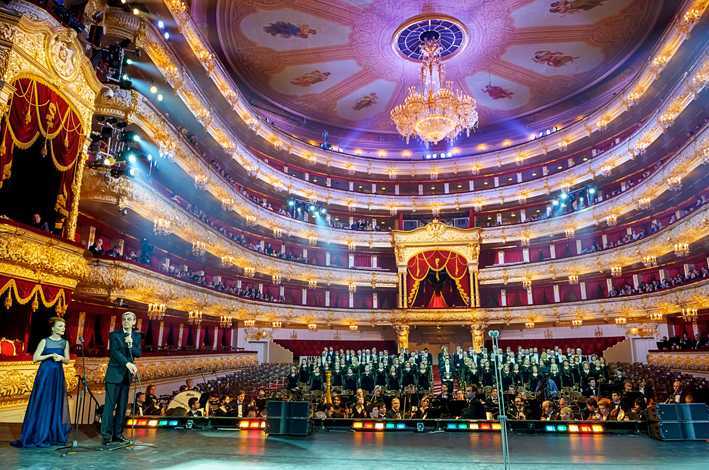
OPERA AND BALLET
The history of the Bolshoi Theatre is closely associated with dozens of names that left a deep mark on world culture: Yury Grigorovich, Vladimir Vasilyev, Maya Plisetskaya, Galina Ulanova, Yekaterina Maksimova, Māris Liepa, Galina Vishnevskaya, Zurab Sotkilava, and many other stars of the opera and of the ballet.
According to Tugan Sokhiev, the musical director of the Bolshoi, the Bolshoi is “the first national musical theatre of Russia”. The staples of its repertoire are mostly masterpieces of the Russian musical theatre of the 19th and 20th centuries, for example Russian opera classics such as Mussorgsky’s Boris Godunov, Borodin’s Prince Igor, Tchaikovsky’s The Queen of Spades, Rimsky-Korsakov’s The Tsar’s Bride and The Snow Maiden, and Shostakovich’s Lady Macbeth of the Mtsensk District—one of the greatest operas of the 20th century. Some international favourites are also staged here: La Traviata, La Bohème, Carmen, Manon Lescaut, etc.
The permanent Bolshoi ballet company has an exceptionally strong team of soloists. At the same time, the theatre actively attracts iconic performers, particularly prominent Russians such as Anna Netrebko, Dmitri Hvorostovsky, Hibla Gerzmava, Ildar Abdrazakov, Olga Peretyatko, and Yekaterina Gubanova.
The Bolshoi sees the mission of its ballet as preserving the classical repertoire and ensuring its masterful performance. Today, it stages the following ballets: The Nutcracker, Sleeping Beauty and Swan Lake by Pyotr Tchaikovsky, La Bayadère by Ludwig Minkus, Georges Balanchine’s Jewels, Onegin to Tchaikovsky’s music, Spartacus by Aram Khachaturian, Legend of Love by Arif Melikov, and others. Svetlana Zakharova is the most reputed prima ballerina of the Bolshoi Theatre, the only La Scala étoile among Russian ballet dancers.
The Bolshoi is always eager to present the best pieces of world theatre art to its audience. For this purpose, it invites distinguished European conductors, directors, artists, scenic designers and performers for its own productions as well as hosting guest performances of the world’s major musical theatres (La Scala, Royal Opera House, Hamburg State Opera, etc.).
HISTORIC BUILDING GUIDED TOURS
Tickets to the Bolshoi Theatre cost a pretty penny today. If you don’t have enough money or time to see a performance on the Historic Stage, you should pay attention to the theatre tours. Guided tours in English and Russian are run a few times a week in the morning, starting from the central entrance. You’d better get in a queue in advance, as the demand is huge and seats are limited. Box offices open at 11 a.m. Tourists are let in to purchase the tickets (the prices are specified on the official website) and then proceed to a tour, which lasts one hour.
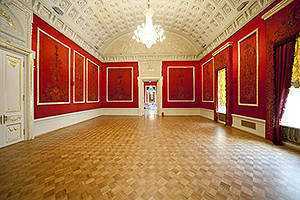 On a tour, you can learn a lot about the history of the Bolshoi. First, tour guides lead their groups through the Lobby halls, explaining their reconstruction and how they were used before the revolution. Then, the tour continues to the splendid historic auditorium. At the end of the tour, you will go up to the fourth-tier balconies, from where an opera or ballet rehearsal can be seen, if you are lucky. Visitors are allowed to take photos of everything except stage rehearsals. The theatre has a museum of its own, but you can’t visit it separately. Exhibitions organised by the museum are held in the Exhibition and Choral Halls and are only available to those with tickets for a performance or a guided tour.
On a tour, you can learn a lot about the history of the Bolshoi. First, tour guides lead their groups through the Lobby halls, explaining their reconstruction and how they were used before the revolution. Then, the tour continues to the splendid historic auditorium. At the end of the tour, you will go up to the fourth-tier balconies, from where an opera or ballet rehearsal can be seen, if you are lucky. Visitors are allowed to take photos of everything except stage rehearsals. The theatre has a museum of its own, but you can’t visit it separately. Exhibitions organised by the museum are held in the Exhibition and Choral Halls and are only available to those with tickets for a performance or a guided tour.
The tour ends at the gift shop on the basement level of the Bolshoi, where you can buy a souvenir. The gift shop is approached through entrance 9A and is accessible to everyone (regardless of having a ticket) from 11 a.m. to 7 p.m., seven days per week. A snack bar at the fourth-tier level is open during performances. It has two rooms, one with comfortable sofas and low tables, and the other with high round tables to stand around.
How interesting and useful was this article for you?
THE STAGES AND SCHEDULE OF PERFORMANCES
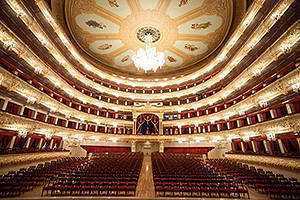 There are three stages in the Bolshoi Theatre: the Historic Stage, the New Stage, and Beethoven Hall. If you are going to the theatre and wishing to see not only a ballet or an opera performance but also the famous theatre building with its splendid hall, you should opt for productions mounted on the Historic Stage. The New Stage constructed in 2002 is located in a separate building to left of the Bolshoi. As for Beethoven Hall, it was built after the renovation of 2011 on the first floor of the Bolshoi Theatre historic building. It now holds concerts and performances for children.
There are three stages in the Bolshoi Theatre: the Historic Stage, the New Stage, and Beethoven Hall. If you are going to the theatre and wishing to see not only a ballet or an opera performance but also the famous theatre building with its splendid hall, you should opt for productions mounted on the Historic Stage. The New Stage constructed in 2002 is located in a separate building to left of the Bolshoi. As for Beethoven Hall, it was built after the renovation of 2011 on the first floor of the Bolshoi Theatre historic building. It now holds concerts and performances for children.
The Bolshoi mounts productions seasonally. For example, The Nutcracker is only staged in winter, in the second half of December and sometimes during the New Year holiday week, too (there are individual repertoires for each season). The famous Swan Lake has been held in autumn (mostly in September) and in January for the last three years.
Tickets to the Historic and New Stages become available three months before the performance and those to Beethoven Hall can be purchased two months in advance. The sale of tickets begins with the pre-sale in box offices, and only then are the tickets left sold through the website and official distributors. Please note that there is an immense demand for iconic performances, so tickets are often sold out during the pre-sale period.
Симфонический оркестр Мариинского театра, все видео (34)
Больше информации совсем скоро
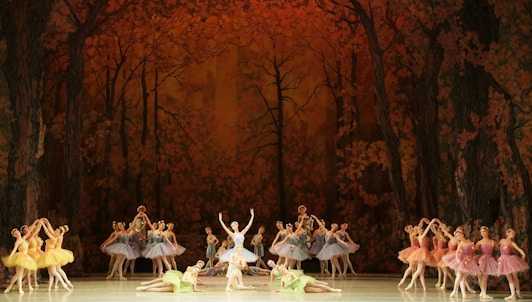
«Дон-Кихот» Горского, по разработке Петипа, музыка Минкуса
Сослан Кулаев (Дон Кихот), Виктория Терёшкина (…
балет
Больше информации совсем скоро
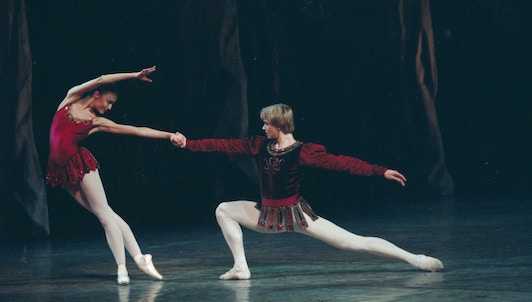
«Драгоценности» Баланчина, музыка Форе, Стравинского и Чайковского
Оркестр и балет Мариинского театра
балет
Больше информации совсем скоро

XVI Международный конкурс им. П.И. Чайковского: Финал, медные духовые
#TCH16
концерт
Больше информации совсем скоро
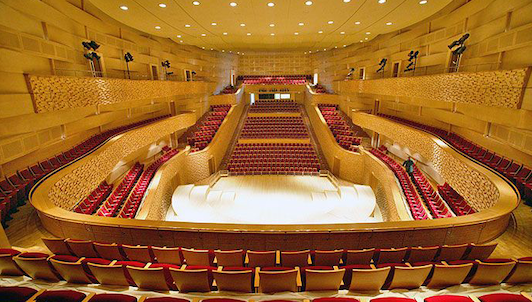
XVI Международный конкурс им. П.И. Чайковского: Финал, деревянные духовые
#TCH16
концерт
Больше информации совсем скоро
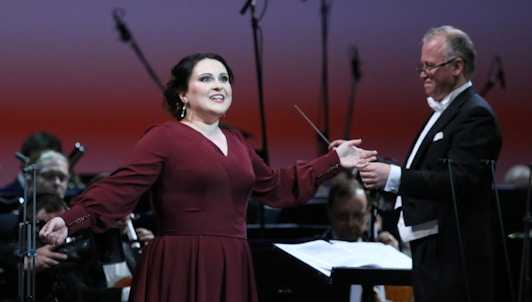
XVI Международный конкурс им. П.И. Чайковского: Финал, сольное пение
#TCH16
концерт
Больше информации совсем скоро

XVI Международный конкурс им. П.И. Чайковского: Гала-концерт победителей (I/II)
#TCH16
концерт
Больше информации совсем скоро
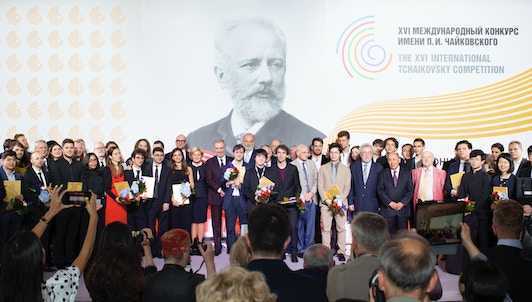
XVI Международный конкурс им. П.И. Чайковского: Гала-концерт победителей (II/II)
#TCH16
концерт
Больше информации совсем скоро
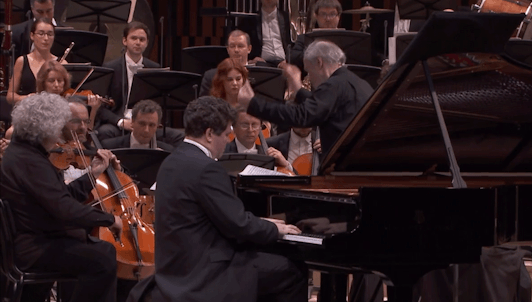
Прокофьев и Шостакович, дирижирует Валерий Гергиев – С Денисом Мацуевым
I Международный московский фестиваль «Зарядье»
концерт
Больше информации совсем скоро

«Погребальная песня» Стравинского, дирижирует Валерий Гергиев
#stravinskypremiere – Симфонический оркестр Мар…
концерт
Больше информации совсем скоро
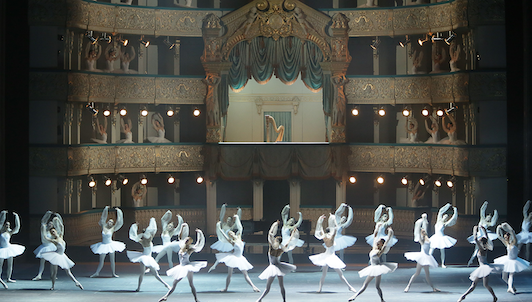
Гала-концерт открытия Мариинского-2
С Валерием Гергиевым
концерт
Больше информации совсем скоро
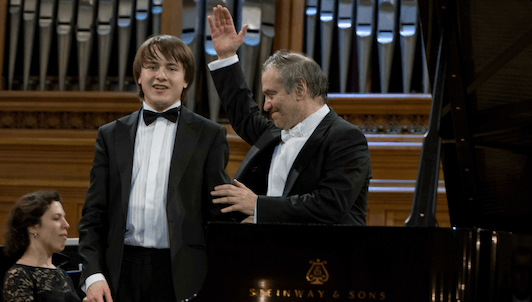
Прокофьев, дирижирует Валерий Гергиев — Даниил Трифонов исполняет Первый фортепианный концерт
Симфонический оркестр Мариинского театра — Все …
концерт
Больше информации совсем скоро

«Щелкунчик» в постановке Вайнонена по разработке Петипа и Иванова, музыка Чайковского
Алина Сомова (Маша-принцесса), Владимир Шкляров…
балет
Больше информации совсем скоро
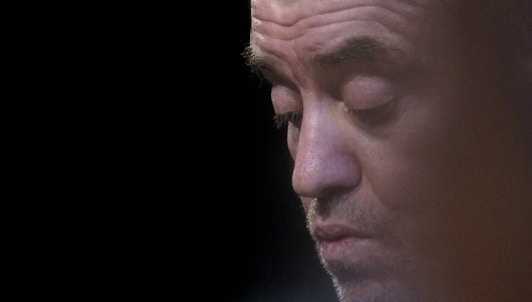
Симфония № 2 «Малороссийская» Чайковского, дирижирует Валерий Гергиев
Симфонический оркестр Мариинского театра. Полно…
концерт
Больше информации совсем скоро
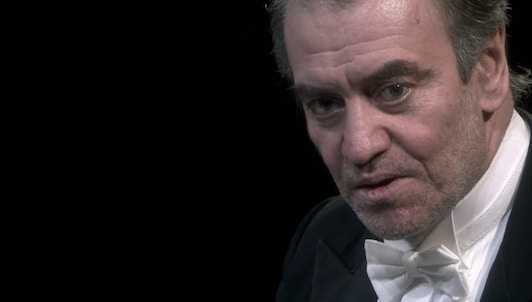
Симфония № 1 «Зимние грезы» Чайковского, дирижирует Валерий Гергиев
Симфонический оркестр Мариинского театра. Полно…
концерт
Больше информации совсем скоро
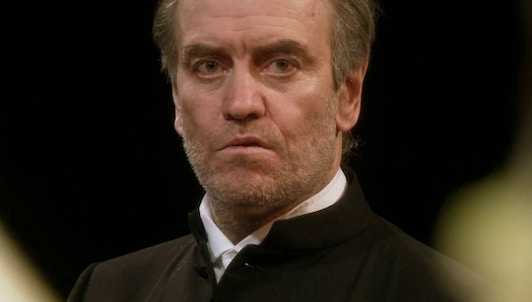
Симфония № 3 «Полонез» Чайковского, дирижирует Валерий Гергиев
Симфонический оркестр Мариинского театра. Полно…
концерт
Больше информации совсем скоро
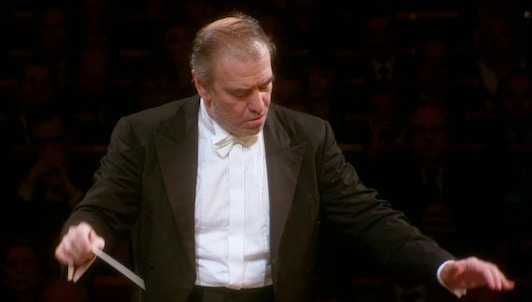
Симфония № 4 Чайковского, дирижирует Валерий Гергиев
Оркестр Мариинского театра. Все симфонии Чайков…
концерт
Больше информации совсем скоро

Симфония № 5 Чайковского, дирижирует Валерий Гергиев
Симфонический оркестр Мариинского театра. Полно…
концерт
Больше информации совсем скоро
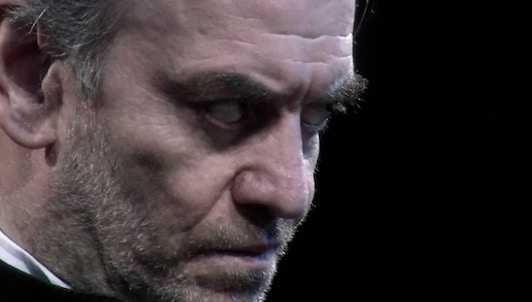
Симфония № 6 «Патетическая» Чайковского, дирижирует Валерий Гергиев
Симфонический оркестр Мариинского театра. Полно…
концерт
Больше информации совсем скоро
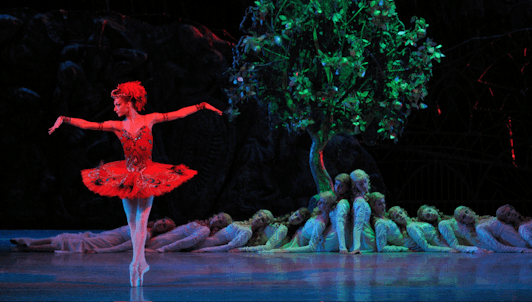
«Весна священная» Вацлава Нижинского и «Жар-птица» Михаила Фокина, музыка Стравинского
Александра Иосифиди, Екатерина Кондаурова… – …
балет
Больше информации совсем скоро

Концерт для скрипки с оркестром № 4 Моцарта, дирижирует Валерий Гергиев – С Юй-Чень Цзэнем
Симфонический оркестр Мариинского театра
концерт
Больше информации совсем скоро

Концерт для скрипки с оркестром № 3 Моцарта, дирижирует Валерий Гергиев – С Александрой Конуновой
Симфонический оркестр Мариинского театра
концерт
Больше информации совсем скоро

Дмитрий Шостакович. Человек со множеством лиц
Документальный фильм Райнера Морица
док. фильм
Больше информации совсем скоро
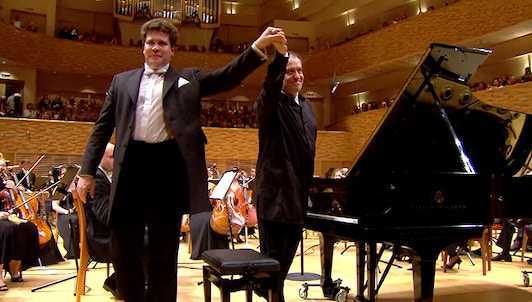
Прокофьев, дирижирует Валерий Гергиев — С Денисом Мацуевым и Леонидасом Кавакосом
Симфонический оркестр Мариинского театра
концерт
Больше информации совсем скоро
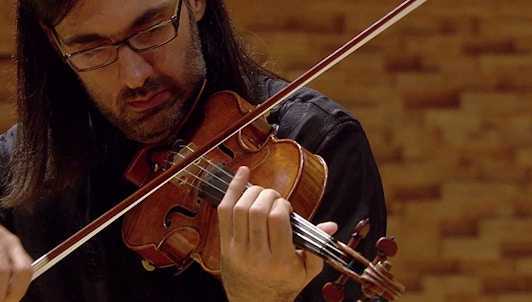
Концерт для скрипки с оркестром № 2 Прокофьева, дирижирует Валерий Гергиев – С Леонидосом Кавакосом
Симфонический оркестр Мариинского театра
концерт
Больше информации совсем скоро

Прокофьев, дирижирует Валерий Гергиев – Александр Торадзе исполняет Второй концерт для фортепиано
Симфонический оркестр Мариинского театра – Цикл…
концерт
Больше информации совсем скоро

Прокофьев, дирижирует Валерий Гергиев – Алексей Володин исполняет Четвертый фортепианный концерт
Симфонический оркестр Мариинского театра – Все …
концерт
Больше информации совсем скоро
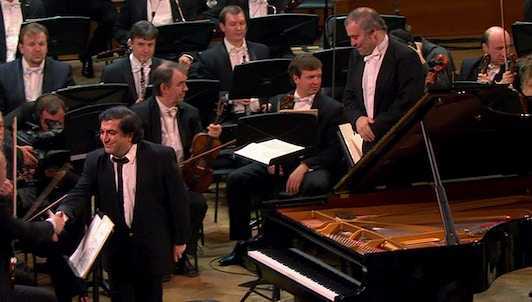
Прокофьев, дирижирует Валерий Гергиев – С Сергеем Бабаяном
Симфонический оркестр Мариинского театра – Все …
концерт
Больше информации совсем скоро

Чайковский, Рахманинов и Шостакович, дирижирует Валерий Гергиев – С Нобуюки Цудзии
Фестиваль «Белые ночи Санкт-Петербурга» 2012 года
концерт
Больше информации совсем скоро
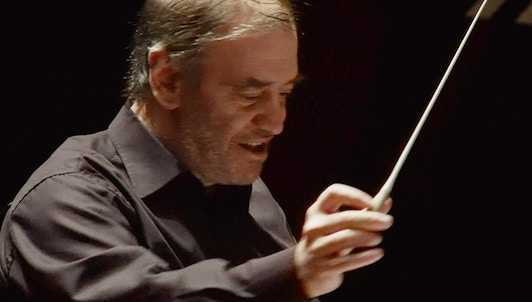
Чайковский на гастролях
Шесть симфоний Чайковского звучат в Европе
док. фильм
Больше информации совсем скоро
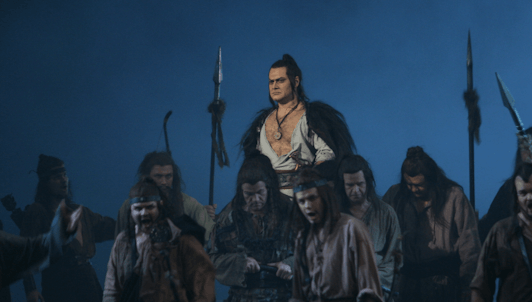
«Аттила» Верди
Артуро Гама (режиссёр-постановщик), Валерий Гер…
опера
Споры
- Стоимость восстановления и ремонта составила 1,1 миллиарда долларов, в шестнадцать раз больше первоначальной оценки. В 2009 году прокуратура утверждала, что ведущему подрядчику трижды платили за одни и те же работы.
- Анастасия Волочкова Бывшая прима-балерина Большого театра заявила, что видит в театре «большой бордель», потому что, по ее словам, администрация театра приглашает балерин на вечеринки и отказывается от ролей, если они не соглашаются.
- 17 января 2013 г. Сергей Филин балетмейстер Большого театра подвергся нападению с применением серной кислоты, в результате чего потерял большую часть зрения. Позже в преступлении был обвинен танцор.
- В области кассовых сборов инсайдер театра рассказал немецкому изданию. Der Spiegel что билеты часто продают мафиозным дилерам, которые, в свою очередь, продают их на черном рынке за двойную номинальную стоимость.
- Качество исполнения подверглось критике со стороны бывшего музыкального руководителя. Александр Ведерников (2001-2009). Он заявил, что Большой театр ставит «бюрократические интересы выше художественных».
- 8 июля 2017 года, за три дня до премьеры, Большой театр отменил премьеру балета о легендарной танцовщице. Рудольф Нуриев. Генеральный директор Владимир Урин утверждал, что это было из-за плохого качества танцев, однако ведущий танцор Мария Александрова утверждал, что это был первый признак «новой эры» цензуры. Это был первый раз, когда шоу было организовано таким образом после распада Советского Союза, что вызвало слухи о мотивах, стоящих за этим.
INTERIOR
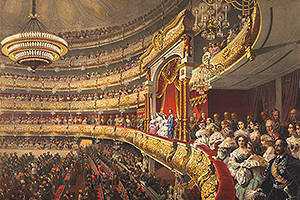 Cavos paid a lot of attention to the auditorium, making it six-tier to accommodate 2,300 people. The hall has a shape of a violin, with the orchestra pit situated in the narrow part. Cavos was an ingenious acoustician: each element of décor contributes to the sound. He invented lots of unusual solutions: all panels in the hall are made of fir tree used as a tonewood in violins, cellos and guitars. Mouldings on the balconies are made not of plaster but of papier-mâché, which not only fails to absorb sound but also resonates it. Multiple acoustic cavity resonators are provided in the auditorium. All the decorations and fabric were fully renovated during the 2005–2011 renovation of the historic building.
Cavos paid a lot of attention to the auditorium, making it six-tier to accommodate 2,300 people. The hall has a shape of a violin, with the orchestra pit situated in the narrow part. Cavos was an ingenious acoustician: each element of décor contributes to the sound. He invented lots of unusual solutions: all panels in the hall are made of fir tree used as a tonewood in violins, cellos and guitars. Mouldings on the balconies are made not of plaster but of papier-mâché, which not only fails to absorb sound but also resonates it. Multiple acoustic cavity resonators are provided in the auditorium. All the decorations and fabric were fully renovated during the 2005–2011 renovation of the historic building.
The hall interior is an elegant union of Renaissance and Byzantine style based on the combination of white, golden and bright raspberry colours. The ultimate pearl in the crown is the magnificent crystal chandelier with tens of thousands of elements. The chandelier is 9 m high and 6 m in diameter, weighing 2,200 kg. It was manufactured for the Bolshoi in France in 1863. 30 years later, the original gas jets were transformed into electric lamps, and the chandelier hasn’t changed since then.
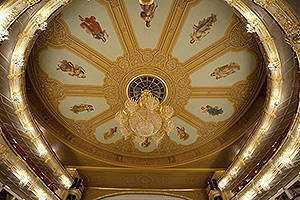 The chandelier is hanging from the center of a fine painting Apollo and the Muses created by academic painter Alexey Titov in the 19th century. Interestingly, the painter included an Easter egg by replacing Polyhymnia, the canonical Muse of religious hymns, by the Muse of pictorial arts he invented. You can see her with a palette and a brush in her hands.
The chandelier is hanging from the center of a fine painting Apollo and the Muses created by academic painter Alexey Titov in the 19th century. Interestingly, the painter included an Easter egg by replacing Polyhymnia, the canonical Muse of religious hymns, by the Muse of pictorial arts he invented. You can see her with a palette and a brush in her hands.
During the renovation, the majesty of the auditorium enfilades was also restored: the Lobby, the White Foyer, the Choral, the Exhibition and the Round and Beethoven Halls. The ceiling paintings were restored in the White Foyer: they might look like chiseled plasterwork, but this is a trick of the light provided by the grisaille technique. The Emperor’s box is entered from the central part of the White Foyer. Above the entrance, you can see the monogram of Nicholas II, the last Emperor of Russia: the Russian letter “Н” intertwined with the Roman numeral II.
Beethoven Hall and the Round Hall are astoundingly splendid. We can see them today exactly the same as they were in 1895, when they were renovated for the coronation of Nicholas II. After the reconstruction, Beethoven Hall regained its imperial symbols that had been lost during the Soviet era: moulded crowns and the imperial monogram. The walls are upholstered with red fabric, the restoration of which required nearly five years of surveys and renovation works. The red satin was woven manually on Jacquard looms using 19th-century technology. Only 5 or 6 cm of fabric per day could be manufactured using this technique, while 700 m was required to cover the walls of the two halls.
ORIGINS
 The Bolshoi was built as a private theatre in 1771. It owns its existence to Peter Urusov, the prosecutor appointed by Catherine the GreatEmpress of Russia from 1762 until 1796 to a ten-year privilege of organizing performances, balls, masquerades and other entertainments. Originally, the theatre was named Petrovsky after Petrovka StreetRussian: ulitsa Petrovka or улица Петровка in the centre of Moscow. Later, Urusov invited English entrepreneur Michael Maddox to join the project. Maddox had come to Russia at the age of 19 as an equilibrist and the manager of “mechanical and physical representations”. Petrovsky Theatre became the first public theatre in Moscow. However, its owners were deeply in debt, and in 1805 the theatre was destroyed by fire. After that, the theatre and all its debts were nationalised. The company performed for almost 20 years at different stages until it found its new home at Teatralnaya SquareRussian: Teatralnaya ploshchad or Театральная площадь in 1825. The building was designed by Joseph Bové, the key Moscow architect of that time. It amazed Muscovites with its majestic size, and soon the name acquired a “prefix” to become the Bolshoi“bolshoi” is Russian for “large” or “grand” Petrovsky Theatre. It became the central theatre of Moscow.
The Bolshoi was built as a private theatre in 1771. It owns its existence to Peter Urusov, the prosecutor appointed by Catherine the GreatEmpress of Russia from 1762 until 1796 to a ten-year privilege of organizing performances, balls, masquerades and other entertainments. Originally, the theatre was named Petrovsky after Petrovka StreetRussian: ulitsa Petrovka or улица Петровка in the centre of Moscow. Later, Urusov invited English entrepreneur Michael Maddox to join the project. Maddox had come to Russia at the age of 19 as an equilibrist and the manager of “mechanical and physical representations”. Petrovsky Theatre became the first public theatre in Moscow. However, its owners were deeply in debt, and in 1805 the theatre was destroyed by fire. After that, the theatre and all its debts were nationalised. The company performed for almost 20 years at different stages until it found its new home at Teatralnaya SquareRussian: Teatralnaya ploshchad or Театральная площадь in 1825. The building was designed by Joseph Bové, the key Moscow architect of that time. It amazed Muscovites with its majestic size, and soon the name acquired a “prefix” to become the Bolshoi“bolshoi” is Russian for “large” or “grand” Petrovsky Theatre. It became the central theatre of Moscow.
The fire of 1853 destroyed the theatre almost completely. The scorched walls and portico columns “adorned” the square for a few years. However, the theatre was restored in record-breaking time (18 months!), appearing before the public in even more grandeur in August 1856 to host the coronation of Alexander IIthe Emperor of Russia from 1855 until his assassination in 1881.
The theatre renovation tender was won by Alberto Cavos, the chief architect of imperial theatres. The new building differed a lot from the previous one: it was almost four metres higher, another pediment was added to the facade, and a cast bronze quadriga was installed instead of Apollo’s troika. This appearance has been preserved until the present day and is recognisable all over the world.
Emperors of Russia lived in Saint Petersburg but kept the ancient tradition of coming to the Kremlin for coronations. The “eighth sacrament” ceremony would be held in Uspensky CathedralRussian: Uspensky Sobor or Успенский собор, after which the Emperor, his guests and retinue would leave Moscow for a solemn celebration in the northern capital. Interestingly, it was decided to celebrate coronations in Moscow after the Bolshoi Theatre was reopened in 1856. The theatre gave a special performance in honor of the occasion, and the Emperor’s monogram was depicted above the entrance to the imperial box.





























